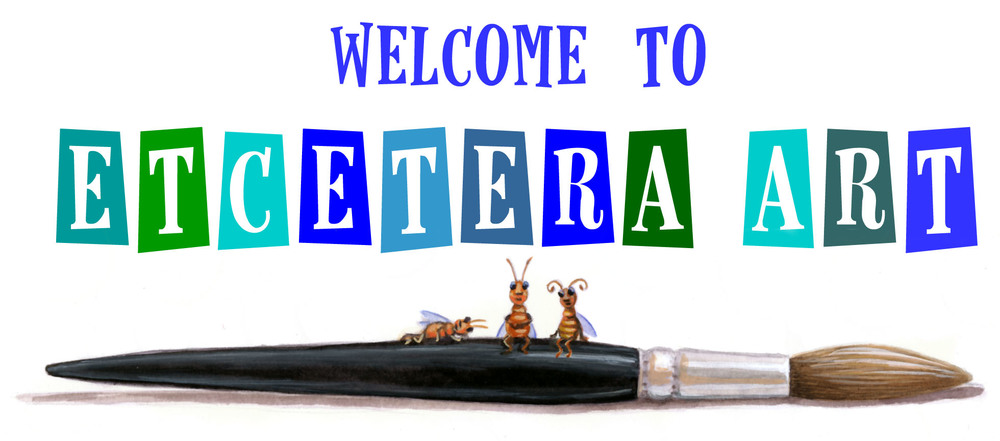For the Bird Inquiry, students delved deeper into exploring technique than in the Insect and Leaf Inquiries. Students love to paint, so I thought students would benefit from participating in a few watercolor technique lessons before making their final bird paintings.
The primary goals for the watercolor technique lessons was for students to experience warm & cool colors, color bleeding and what I like to call 'lovely accidents.' All students created watercolors layered on oil pastel (click here to view a post form last year on watercolor resist) and some third grade students made a brief foray into drawing onto their dry watercolor paintings.
The project below was a lesson that encompassed wet-on-wet, warm & cool colors, color bleeding and 'lovely accidents.' Students painted stripes of color with the watercolor using a wet brush making sure to touch the previous stripe so that the color would bleed into the new stripe. Students could also tip the paper or blow on the colors to see how color moves through the wet medium creating interesting and beautiful mixtures and 'bleeds'--the 'lovely accidents' mentioned previously.
After the paintings were dry, students quickly drew birds from observation and/or imagination and then cut them out. At first, I simply asked students to place their birds on the paintings and move the birds over the surface of their paintings to see how a subject would look on top of such a bright and vibrant background. But then a fourth grade student came up with the idea of using an accordion fold with construction paper strips to make the bird 'pop-up.' It was too great an idea to pass up and so, all the fourth grade classes explored gluing pop-up birds on their warm & cool paintings. Students also knew another kind of fold using two strips of paper folded on each other that also created a pop-up--this lesson turned out to be a great mixture of students using prior knowledge combined with new knowledge with students taking the lead in guiding the direction of the exploration. Click here to view the gallery.
Some students chose to explore the idea in their own way . . . the photo below shows an art work where the students explored the sculptural qualities of the accordion folded strips.
In the work below, the shape to the left of the bird is a suitcase!
This student was interested in how using rainbow colors on her birds made them blend into the background--she decided that the effect was stronger if she glued the birds flat. She ended up using her construction paper strips to make a sun.

